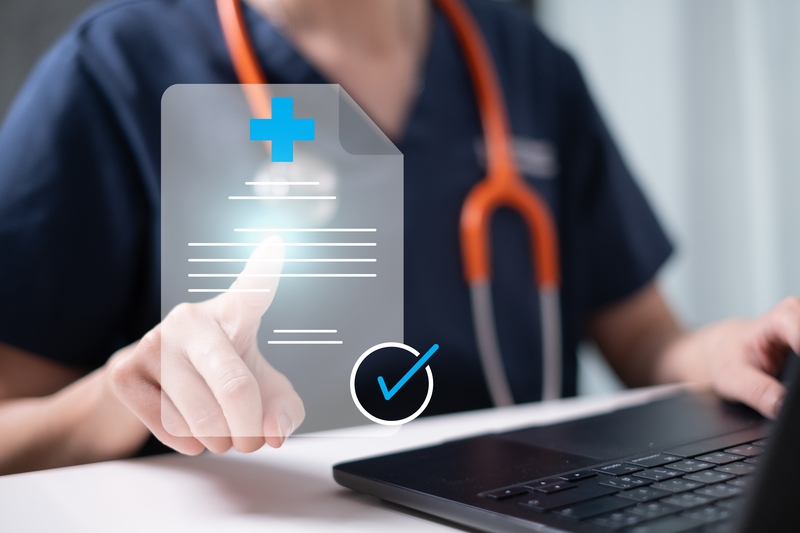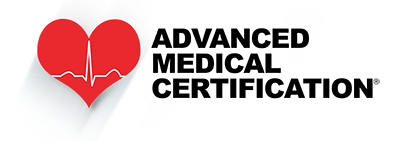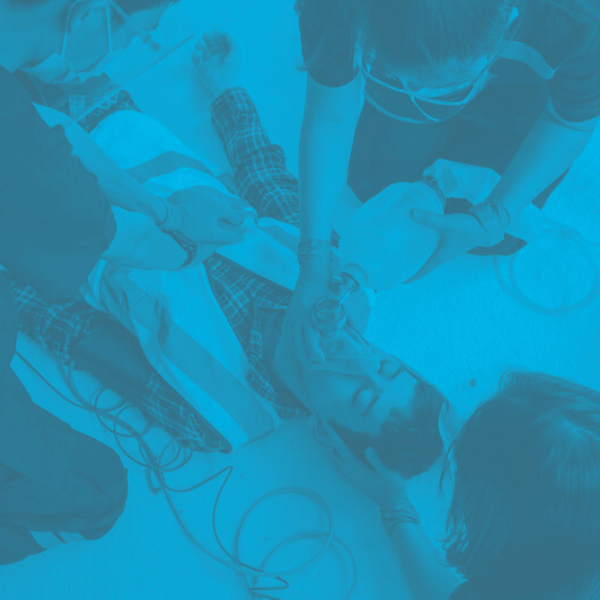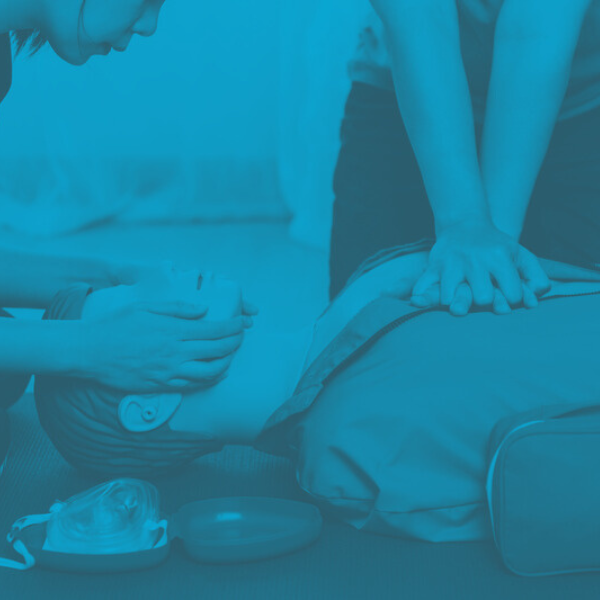How to Get a BLS Certification (Basic Life Support)
How to Get a BLS Certification (Basic Life Support)

by Greta Kviklyte
Life Saver, AMC
Co-authored by Kim Murray, RN, M.S.
posted on Sep 29, 2025, at 12:38 am
Basic Life Support (BLS) certification is a vital credential that equips you with the skills and confidence to act quickly in life-threatening emergencies. From healthcare providers in hospitals to teachers, coaches, and childcare workers, thousands of professionals rely on BLS training to recognize cardiac arrest, perform cardiopulmonary resuscitation (CPR) and first aid, use an AED, and respond to choking or respiratory distress.
If you’re going to get certified, however, you need to make sure your certification comes from a legitimate, accredited provider. You can learn all the skills you want, but employers, hospitals, and licensing boards still require proof that your training meets the latest care guidelines. Choosing the right program ensures your certification is accepted everywhere you work, and that the training you receive is reliable, current, and effective.
We offer Online CPR and BLS Certification
When Do You Need Basic Life Support Certification?
BLS certification is often required (or, at a minimum, strongly recommended) across a wide range of careers and training programs. Whether you’re just beginning your medical education, working directly with patients, or volunteering in a healthcare setting, holding a valid BLS certification ensures you’re prepared to act in emergencies and meet professional expectations.
 Healthcare & Emergency Response Roles
Healthcare & Emergency Response Roles
Most clinical positions require a current BLS certification as a condition of employment. Doctors, nurses, EMTs, paramedics, and other frontline healthcare professionals rely on BLS skills daily when treating patients in crisis. The same is true for first responders such as firefighters and police officers, who are often the first to arrive at the scene of an accident or medical emergency.
Medical Training Roles
BLS certification is a standard prerequisite for students entering nursing, medical, or allied health programs. Many schools and residency programs require proof of certification before you begin clinical rotations.
Caregiving & Clinical Internships
Individuals working in long-term care facilities, home health settings, or clinical internships often need BLS certification to demonstrate readiness to care for vulnerable patients. Caregivers, CNAs, and interns may not face emergencies daily, but the foundational BLS knowledge allows them to help and support licensed staff.
Medical Volunteer Work
Many hospitals, clinics, and humanitarian organizations require volunteers to complete BLS certification courses and hold a valid certification. Whether you’re assisting at a community health fair or serving abroad on a medical mission, BLS certification provides assurance that you can handle sudden medical events safely and confidently.
Steps to Get Your BLS Certification From a Trusted Provider
Step 1: Pick your learning style (In-person, hybrid, or online)
Decide how you want to complete your training. Traditional in-person classes offer hands-on practice, while hybrid options combine online coursework with a brief in-person skills session.
Step 2:Choose a certified provider to enroll
Employers expect your BLS card to come from an accredited source that follows international guidelines. AMC’s BLS courses are accredited by the Postgraduate Institute for Medicine (PIM), adhere to the latest ILCOR standards, and are accepted nationwide and internationally.
Step 3: Study BLS course materials at your own pace
Trusted providers give you access to study guides, videos, and practice questions before you take the certification exam so you can get familiar with the content. With AMC, you’ll also have access to audiobooks and free mock tests.
Step 4: Complete the skills training
If you’re taking an in-person or hybrid course, this step involves demonstrating CPR, AED use, and choking relief on manikins under instructor supervision. With AMC’s online courses, no clinical skills test is required. We’ve made our curriculum with board-certified physicians to provide all the instruction you need without extra requirements.
Step 5: Pass the final test
Every BLS class ends with a final exam that covers key life support concepts and techniques. AMC’s exams are multiple-choice, can be retaken as many times as needed, and provide instant feedback that explains the correct answers.
Step 6: Download or receive your official BLS certificate
Once you pass, you’ll receive proof of certification immediately. AMC provides an instant digital provider card that you can email to your employer or print at home. Many students also choose to receive a physical card for convenience.
How to Get BLS Certification Online (Safely)
Online certification makes it easier than ever to get your BLS card without rearranging your schedule. To make sure your certification is valid and accepted by employers, follow these guidelines:
Preview free course content
Many providers (including AMC) offer free sample materials or practice tests so you can get familiar with BLS content before committing. This gives you a clear idea of what to expect from the certification process and helps you prepare more confidently for the exam.
Choose a trusted provider
The most important step is selecting a provider that’s accredited and recognized by healthcare employers. AMC’s online BLS courses are accredited by PIM, adhere to the latest ILCOR guidelines, and are Joint Commission (JCAHO) compliant.
Confirm a final test or skill check
Legitimate BLS programs require a demonstration of knowledge, either through a written exam or a hands-on skill assessment.
Things to Consider When Getting BLS Training
First-time courses include more foundational training
If this is your first BLS certification, expect a more comprehensive review of the basics during your learning experience. You’ll cover everything from recognizing a heart attack to CPR and AED use to airway management and how to respond to emergencies as a team.
Longer practice modules are required for first-time learners
Compared to renewals, initial courses typically involve more time spent practicing core skills and reviewing key scenarios. AMC’s self-paced format makes it easy to work through these modules at your own speed, even if they take a bit longer at first.
Self-paced training makes a big difference
One of the biggest advantages of online certification through AMC is flexibility. You don’t have to complete your course in one sitting, so you can start, stop, and pick up right where you left off. Medical professionals are extremely busy, and we want our course to help them balance training with work, school, or family responsibilities.
 How to Keep Your BLS Certification Current
How to Keep Your BLS Certification Current
Renew every 2 years
Your BLS certificate will be valid for two years. Renewing on time helps you avoid having to retake the full, first-time course. AMC makes renewal simple with 100% online recertification courses that can be completed in less than an hour.
Look for faster renewal courses
If you’re already familiar with BLS concepts, you don’t need to repeat foundational training. Renewal courses are designed to refresh your knowledge, highlight any updated guidelines, and quickly verify your skills.
Save your digital certificate or wallet card
Once you renew, store your proof of certification somewhere you can easily find it. AMC provides instant digital cards that can be emailed to your employer or stored on your device, as well as optional printed wallet cards.
Frequently Asked Questions
How Long Does a BLS Certification Course Take?
Most people can complete their BLS certification in two to four hours, depending on the format. With AMC’s online BLS course, you can move at your own pace and even finish in under an hour if you’re already familiar with the material.
Can I Get BLS Certification for Free?
Yes, sometimes you can. While most people pay out-of-pocket for their BLS certification, certain jobs, hospital volunteer programs, and clinical internships include BLS training as part of onboarding. In those cases, the organization covers the cost. If your role doesn’t provide it, you’ll need to enroll on your own.
Is BLS Certification Hard to Pass?
BLS training is designed to be practical and approachable, even for first-time learners. As long as you review the course materials and practice the skills, you’ll be prepared to pass.
What If I Fail the BLS Exam?
If you don’t pass the BLS exam on your first try, you’ll still have plenty of options. With AMC, you can retake the course and exam as many times as needed at no extra cost. Each attempt comes with a performance breakdown so you’ll know exactly which areas to review. You can go back through the study resources to strengthen your understanding.
What are the Differences Between BLS, ACLS, and PALS Certifications
BLS is the foundation for all clinicians and trained responders, while ACLS builds on those skills for adult cardiac and respiratory emergencies. PALS adapts advanced life support to infants and childre. You typically need a current BLS card before taking an ACLS or PALS course.
Read our breakdown of this topic on the AMC blog: “What Are BLS, ACLS, and PALS Certifications?”
What is In-Hospital vs. Pre-Hospital BLS?
The principles of basic life support are the same everywhere, but how they’re applied depends on the setting. Pre-hospital BLS is provided outside of medical facilities, usually by EMTs, paramedics, or trained bystanders, often with limited equipment and under time pressure. In-hospital BLS, on the other hand, is performed by nurses, physicians, and rapid response teams in clinical settings where advanced tools, monitoring, and team coordination are available.
Read our guide to this topic for a deeper look at how BLS differs in the field versus the hospital.
Get Your BLS Card Today
Whether you’re starting a career in healthcare, volunteering in your community, or simply wanting the confidence to act in an emergency, a valid BLS certification ensures your skills are trusted and recognized. Take the next step and get started on your BLS certification with AMC.



